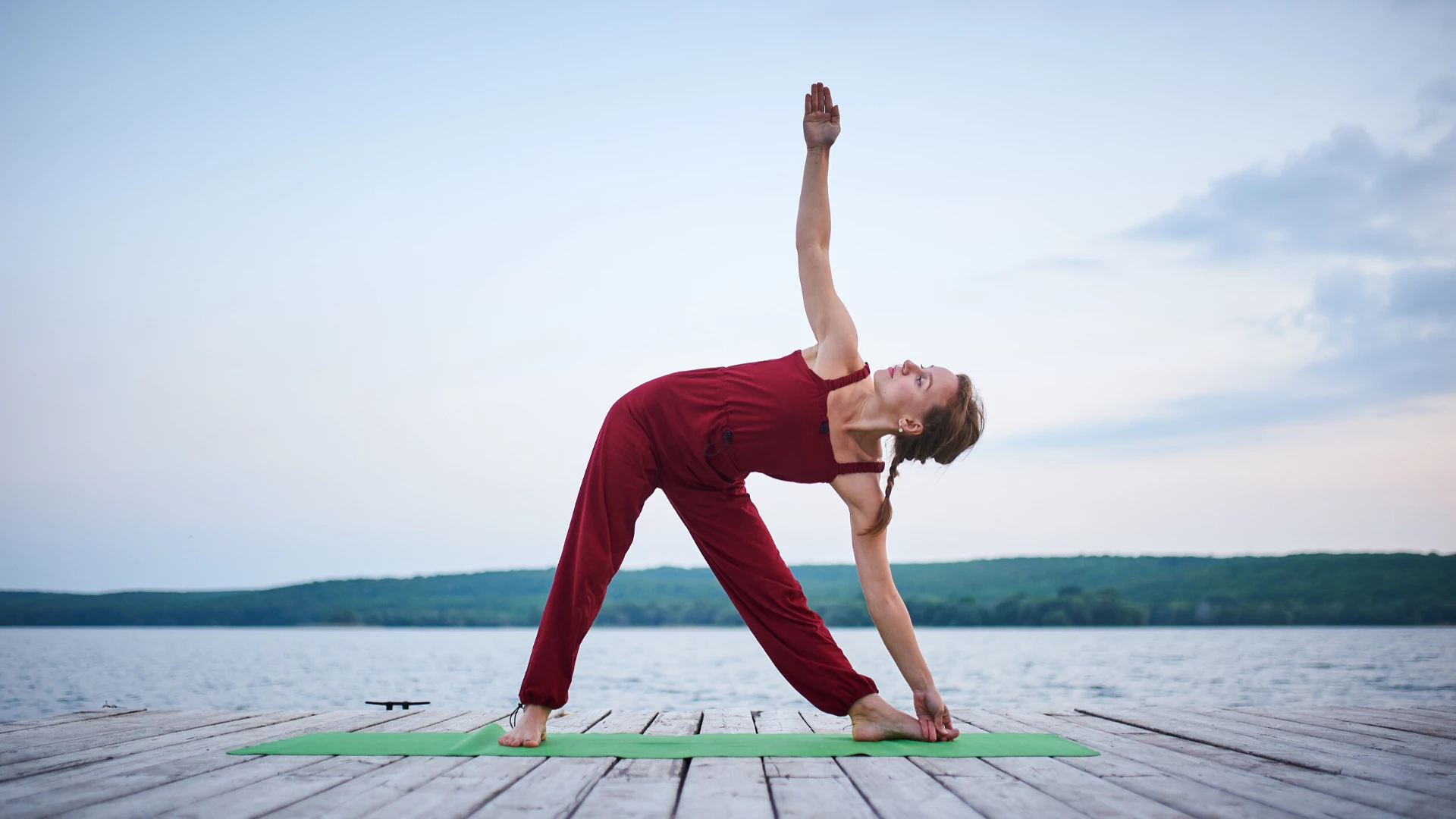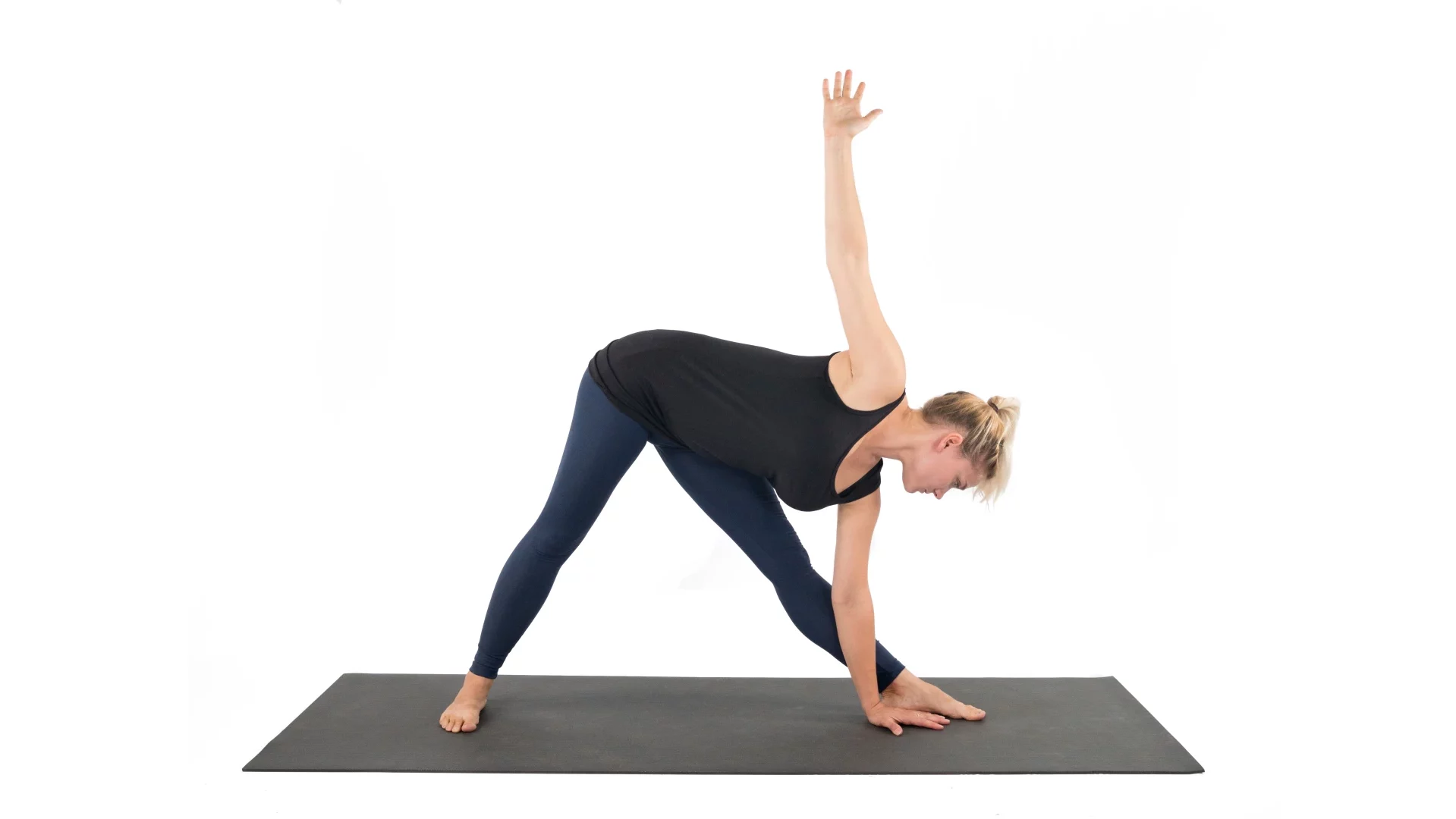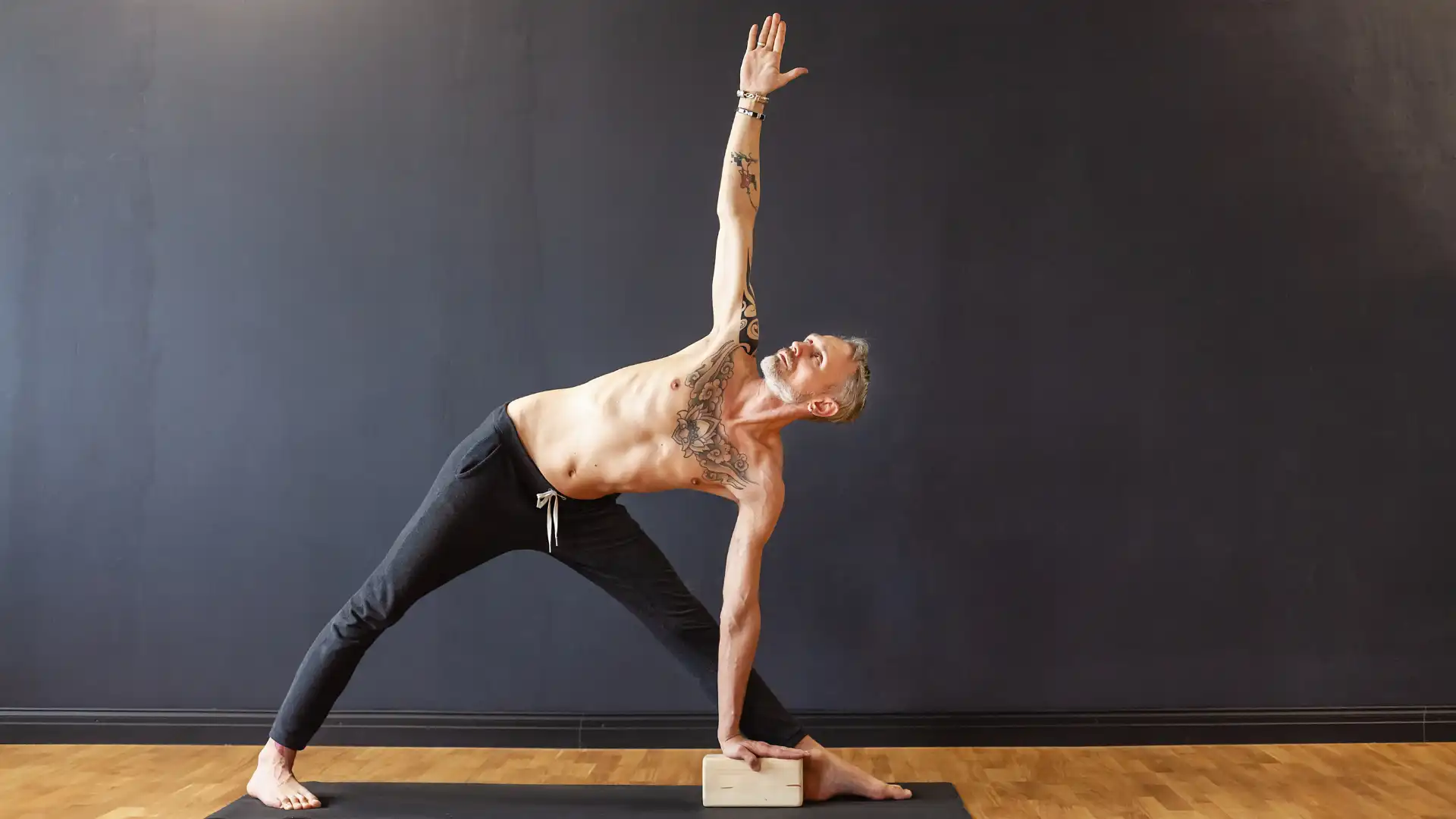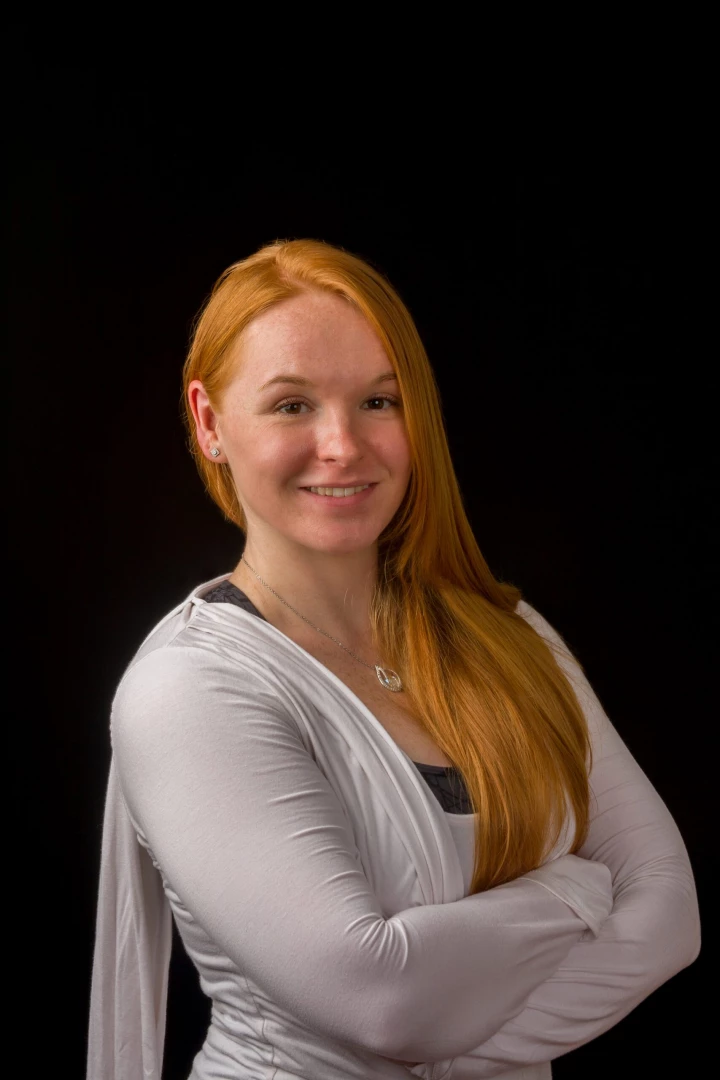Refine Your Trikonasana: A Deeper Look at Triangle Pose Alignment

Trikonasana (Triangle Pose) is one of my favorite poses to practice and teach. This standing pose demands strength and suppleness in the legs and hips. It helps me identify imbalances in my back, and there is a wealth of expansion in the chest and wingspan. This list is the tip of the iceberg of the possibilities of sensations and benefits that you receive when practicing this particular pose.
I love getting into the nitty-gritty of alignment, not because there is a right way and a wrong way to do the pose, but instead, because there is meaning behind why I’m teaching Trikonasana in a particular way. There are as many bodies as there are ways to practice the pose. If a student hears they should move into Trikonasana, then they perform their current concept of what Trikonasana is. However, if we are looking for a specific tilt at the pelvis or reaching the hand to the floor for a particular reason, then we certainly want to align ourselves in a different way to serve that purpose.
Refining Yoga’s Triangle Pose
Let’s take a look at the following photo:

Cue the *gasp* and then let’s look more deeply at what’s going on and why we would want to make some changes.
If I saw this alignment in my class, I wouldn’t try to change my students’ approach by initiating the fear of getting hurt. If we asked them to transition into a vinyasa, wouldn’t they be moving through this movement to step back to Phalakasana (Plank Pose) and Chaturanga Dandasana (Four-Limbed Staff Pose)?
It seems like the goal of this Triangle Pose is to place the hand on the floor. As a result, the spine rounds, the hips are pushed aside to move the torso toward the floor accompanied with more of a forward bend than a lateral bend, the side body located closest to the floor is shortened and the front knee bends.
If I asked this group to place their hand higher up, how would their body change, and would this be something favorable? From my experience, if the class put their hand on a block or a chair, the front leg would straighten more, offering a deeper stretch in the hamstrings, and both sides of the torso would lengthen.
Posture and strength are impacted positively by these changes. If a student lives with a predominantly rounded spine, Trikonasana allows them to try lengthening their spine differently. When the body side bends against gravity, the side of the body closest to the ground wilts if we try to place the hand on the floor prematurely. Lifting the whole torso by placing the bottom hand higher and stretching the lower side body in the direction of the head engages and builds a moderate amount of strength in the side body.
Another purpose for wanting the hand flat and pushing into something is that it could help stretch the side body. But the hand must be placed at an adequate height to leverage the movement of the side body. If I take this a step further, maybe the hand needs to press down because later on, we might move into Vashistasana (Side Plank Pose), where the press and the position of the arm are key to understanding that pose. However, we want to practice in a way that serves our needs. Placing the hand higher up helps facilitate a shape closer to the arm Side Plank.

Trikonasana Pose with a Tadasana Spine
Understanding how to correct alignment is infinitely harder when we are trying to move into alignment from an already disadvantageous position. Instead of trying to fix Trikonasana while you’re already in the pose, it would be better to start over knowing what you want your students to experience. If we’re going to maintain a Tadasana (Mountain Pose) spine, start with a Tadasana spine, and pay attention to when the spine deviates from Tadasana. For example, one way I would lead my students into Triangle Pose is to maintain a Tadasana spine:
- Start in a wide-legged stance with your feet parallel. Notice your Tadasana spine. Turn your right leg 90 degrees so that your foot, shin, knee, and thigh are all pointing toward the end of your mat. Rotate your back foot, leg, and pelvis in about 30 degrees. Has your spine changed at all with the transition of the legs and hips?
- Tilt your pelvis and torso to the right. Initiate the side bend from your hips instead of your spine. There are many ways to teach how to bend laterally from the hips rather than from the spine.
- Once the hips stop tilting, side bend a little on purpose, shortening the lower side of the waist. Now lengthen it like Tadasana. Repeat this a few times.
- Stand up and try this on the other side.
- Go back to the first side and work the same steps. Then add reaching your arms out to the sides at shoulder level so that your arms are at a 90-degree angle to your torso.
- Now that you can feel the difference between bending sideways with a neutral spine and the scrunched-up side body, lower your arm and place a prop of adequate height under your hand so that the prop reaches you rather than you reaching further down to touch it.
- Notice the effect that gravity has on your spine and resist the temptation of releasing to gravity as you maintain your Tadasana spine.
- Stay here for a few breaths, then bring your torso upright by reversing the lateral tilt of your pelvis. Try the other side.
There is so much you can explore and experience in Trikonasana, but understanding what you want to experience or have others experience trumps an ideal or photogenic Triangle Pose. Take a more in-depth look at this photo. What do you see? What would you have the students try, and why?
 Allison Schleck, E-RYT 500, RPYT, is a vinyasa-based yoga teacher, fascinated by the intricate relationship between the mind and body. She offers a range of alignment-focused classes touching on anatomy, philosophy, and creative propping with a mindful approach. In addition to teaching group classes and managing the Yoga Culture studio in Danbury, CT, she also teaches at Open Door Family Medical Center in Westchester, NY, empowering mothers-to-be with prenatal yoga classes and childbirth education. You can find her @allisonschleck on Instagram and www.allisonrayjeraci.com.
Allison Schleck, E-RYT 500, RPYT, is a vinyasa-based yoga teacher, fascinated by the intricate relationship between the mind and body. She offers a range of alignment-focused classes touching on anatomy, philosophy, and creative propping with a mindful approach. In addition to teaching group classes and managing the Yoga Culture studio in Danbury, CT, she also teaches at Open Door Family Medical Center in Westchester, NY, empowering mothers-to-be with prenatal yoga classes and childbirth education. You can find her @allisonschleck on Instagram and www.allisonrayjeraci.com.




